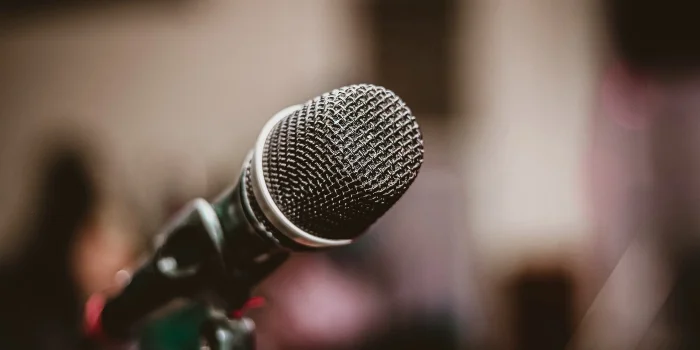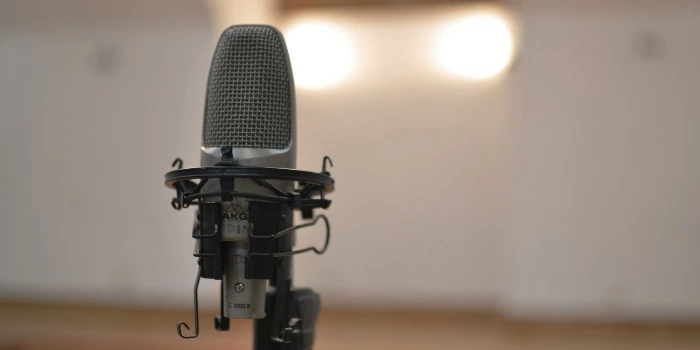Two main types of microphones are dynamic and condenser and you should have both types in your studio.
Each type of microphone is great for recording however both of them have some pros and cons.
And in this post, I will try to compare and explain the differences between dynamic and condenser microphones.
What’s A Dynamic Mic

Microphones that operate using electromagnetic induction are dynamic microphones. It uses a diaphragm, a coil of wire, and a magnet to convert sound waves into electrical signals.
Diaphragms are attached to the coil, which is situated within a magnetic field. When sound waves hit the diaphragm, it vibrates, causing the coil to move within the magnetic field.
Dynamic microphones are highly valued for their robustness and exceptional ability to withstand and capture high sound pressure levels. This makes them a popular choice in a wide range of applications, including live performances, broadcasting, and recording studios.
What’s A Condenser Mic

A condenser microphone is a type of microphone that uses a capacitor to convert sound waves into electrical signals. It consists of a thin metal diaphragm placed close to a metal backplate, with a small gap in between.
When sound waves hit the diaphragm, it vibrates, causing the distance between the diaphragm and the backplate to change. As the distance between the two plates varies, the capacitance between the plates changes, generating an electrical signal.
One key advantage of condenser microphones is their ability to capture a wide frequency range, making them suitable for capturing detailed and nuanced audio, including vocals, acoustic instruments, and ambient sounds.
Differences Between Dynamic And Condenser Mics
As we know microphones are essential home studio recording gear but it’s important to know the difference between them.
This will give you a clear idea of how and when to use a specific microphone while recording musical instruments or vocals.
Here are some of the main differences between dynamic and condenser microphones:
- Transducer Principle – Dynamic microphones use electromagnetic induction to convert sound waves into electrical signals. In these devices, a diaphragm is attached to a coil that moves within a magnetic field. In contrast, condenser microphones utilize a capacitor to convert sound waves into electrical signals, with a diaphragm and a backplate forming the capacitor.
- Sensitivity – Condenser microphones are generally more sensitive than dynamic microphones. For recording vocals and acoustic instruments, they are ideal because they capture subtle nuances and details. Dynamic microphones, on the other hand, have lower sensitivity and are more suitable for capturing high sound pressure levels, making them popular for live performances and instruments such as drums and electric guitars.
- Power Requirements – Condenser microphones require an external power source to operate. They typically rely on phantom power, which is supplied through the microphone cable from a mixing console or audio interface. Dynamic microphones do not require external power and can be connected directly to a microphone input without any additional power source.
- Durability – Dynamic microphones are generally more rugged and durable compared to condenser microphones. They can withstand rough handling, high sound pressure levels, and environmental conditions, making them suitable for on-stage performances and outdoor use. The more sensitive and delicate nature of condenser microphones makes them more susceptible to damage if mishandled or exposed to moisture.
- Cost – Dynamic microphones are generally more affordable compared to condenser microphones. Manufacturing a dynamic microphone is simpler and less expensive, and this makes it perhaps the best home recording microphone. Condenser microphones, due to their more complex design and higher sensitivity, tend to be more expensive, especially those designed for professional studio recording applications.
Although they are different in many ways, both types of microphones can be used in multiple situations and work differently with various instruments.
Which One Is Good For Recording
As I have mentioned, both microphones – dynamic and condenser – are great for recording instruments and vocals. But what are the strengths of each mic type?
Well, it’s hard to tell but in general, you can record any instrument or vocal with both types of microphone but I have my favorite for different situations.
For example, in my opinion, a dynamic mic is the best vocal mic because it gives me a detailed, focused, and powerful sound.
However, sometimes I use a condenser to record lead vocals and almost always use them to record backing or group vocals.
I use both mics for recording electric guitars because I can blend two different sounds to get a unique and interesting sound.
Also, I think dynamics are great drum mics for recording, however, when it comes to room sound, I think condensers are the best drum overhead mics.
Of course, you can use any combination of mics to record any instrument or vocal take. It’s up to you what sound you want to get and what to achieve sonically.
Conclusion
Both types of microphones are great for recording music whether it’s a stringed instrument, drum, or vocals. But because they capture sound differently, one type might work better for a specific instrument than others. You should try it yourself and make decisions from your experience. And I hope this post will be a helpful guide for you.
